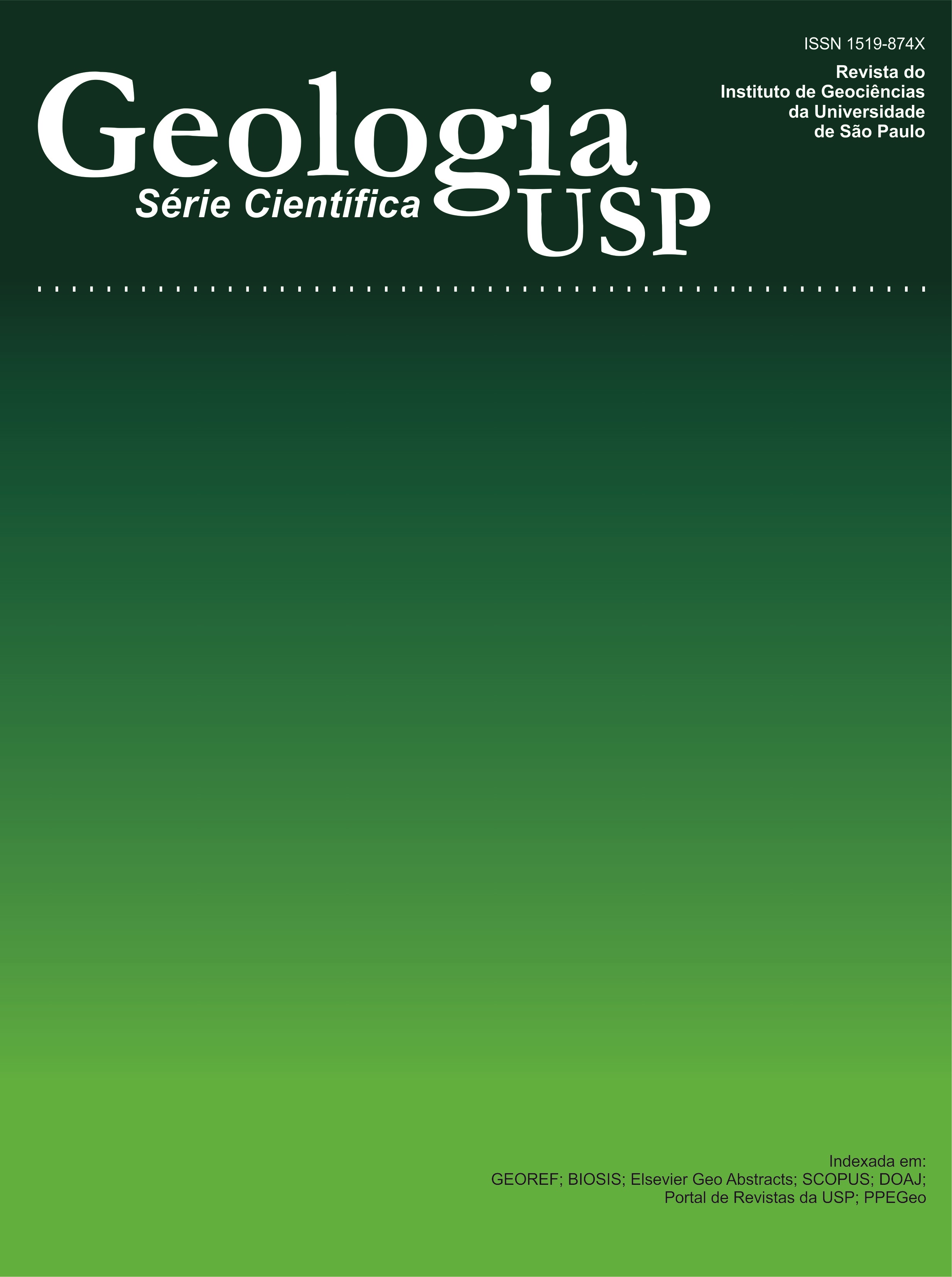Digital imaging and 3D virtual modeling of a block of travertine rock
DOI:
https://doi.org/10.5327/Z1519-874X201400030006Abstract
Methodological procedures adopted in the digital imagery process, in a non-conventional scale, of a block of travertine rock from the quaternary age were presented on this paper. The rock, named T-Block, weighting 21.2 ton and measuring 1.60 x 1.60 x 2.70 m, was stored in the courtyard of the Laboratório Experimental de Petróleo "Kelsen Valente" (LabPetro) at the Universidade Estadual de Campinas (UNICAMP). Petrobras, the Brazilian Petroleum Company, had sponsored its shipment from Italy to Brazil in order to perform geological studies and petrophysical essays, mainly by research groups from universities and research centers of Brazil that work in the areas of reservoir characterization and 3D digital imaging. The purpose of this work was to develop a Digital Solid Model involving 3D digital imaging techniques of internal and external surfaces of the T-Block. Light Detection and Range technology and Ground Penetrating Radar were used to capture the imaging of the external and internal surfaces, respectively. Additionally, gamma ray profiles were generated by using a portable gamma-spectrometer. The use of Light Detection and Range technology combined with Ground Penetrating Radar enabled the identification and 3D mapping of three distinct radar facies, which were correlated to the three sedimentary facies already defined: "Travertine in Domes Radarfacies", "Transitional Travertine Radarfacies" and "Laminated Travertine Radarfacies". The gamma ray profiles revealed slight variation, in amplitude, of the radioactivity values. This is likely due to the fact that the sedimentary layers have the same mineralogical composition, which is mainly composed of carbonate sediments, with no siliciclastic clay and/or other radioactive mineral elements inside the more pelitic layers.Downloads
Download data is not yet available.
Downloads
Published
2014-09-01
Issue
Section
Articles
License
Authors who publish in this journal shall comply with the following terms:
- Authors keep their copyright and grant to Geologia USP: Série Científica the right of first publication, with the paper under the Creative Commons BY-NC-SA license (summary of the license: https://creativecommons.org/licenses/by-nc-sa/4.0 | full text of the license: https://creativecommons.org/licenses/by-nc-sa/4.0/legalcode) that allows the non-commercial sharing of the paper and granting the proper copyrights of the first publication in this journal.
- Authors are authorized to take additional contracts separately, for non-exclusive distribution of the version of the paper published in this journal (publish in institutional repository or as a book chapter), granting the proper copyrights of first publication in this journal.
- Authors are allowed and encouraged to publish and distribute their paper online (in institutional repositories or their personal page) at any point before or during the editorial process, since this can generate productive changes as well as increase the impact and citation of the published paper (See The effect of Open Access and downloads on citation impact).
How to Cite
Silva, V. de A., Castro, D. L. de, Souza, A. de M., Egito, L. M., Reis Júnior, J. A. dos, & Lima-Filho, F. P. (2014). Digital imaging and 3D virtual modeling of a block of travertine rock . Geologia USP. Série Científica, 14(3), 75-96. https://doi.org/10.5327/Z1519-874X201400030006





